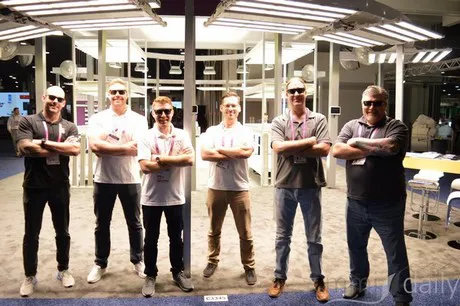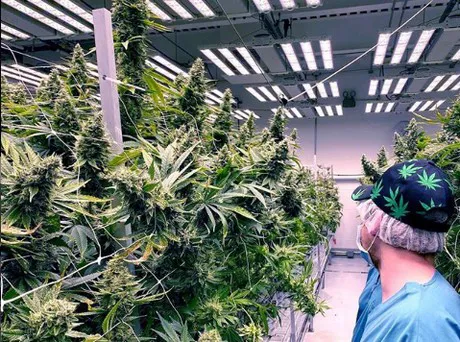“It is not about the lighting system only, but it is about the whole cultivation side of it,” says Christopher Sloper, chief horticultural officer with Fohse and author of the LED Grow Book. “Now, the industry is slowly coming to the understanding that LED lighting is superior with regards to many aspects to HID lamps. That is, it is important to take everything you know about growing under HID, and put it aside, and start over again from amateur mind set with LED.”
Indeed, according to Christopher, everything that one knows on HID cannot be applied to LEDs as well. “The biggest change that people need to make is that plants need a specific leaf surface temperature in order to activate an enzyme called RuBisCO,” he explains. “If the temperature is not where it needs to be, then the photosynthetic rate is going to drop, which means that the plant is storing less energy to continue its life cycle. People with HID background know that heat is the enemy, but I have seen grow rooms running at very high temperatures with no problems at all, exactly because they were using LED lights. I am trying to convince people that with LEDs it is totally fine (and required) to set the ambient temperature at 27-28 Celsius degrees.”
 The Fohse team at the MJBizCon 2019, Las Vegas
The Fohse team at the MJBizCon 2019, Las Vegas
Different factors to address
However, the problem is that the current industry lacks the knowledge on how to make HVAC for large systems. “People use them in the traditional way,” he explains. “Back then, people used to grow in small rooms, and they were relatively easy to control. But as rooms started getting bigger, say 10,000+ sq. ft. of canopy, you need to cover all that with hundreds of lights, and a huge air handler(s). Most of the HVAC specialists have been active in other sectors. Thus, they are not particularly knowledgeable regarding plants’ needs; they know what needs to be done when it comes to humans. We are getting to that point now, but there is still a long way to go on how to get the environment right and the facility efficient.”
At the same time, Christopher believes that this does not mean that HID bulbs will go away completely. “In some environments, it can make sense. And I’m thinking of smaller grows in colder areas where that additional heat provided by HID can be beneficial.”
According to Christopher, LEDs can be particularly efficient with regards to cloning. “There’s still a lack of solutions specific for that,” he says. “Light uniformity is the most important thing. That is why we are developing a light for cloning which specifically puts uniformity at the top. This is of the utmost importance in order to make a smoother transition from cloning, to veg, to bloom.”
IPM
Light sources can also be used as effective crop protection. “There is some anecdotal stuff on UV lights for IPM,” Christopher explains. “Strawberry growers have understood that particular applications of UV lights can drive spider mites off the plants. By using certain portions of UV bands, it is fairly possible to get rid of pathogens. The early studies were nice, but they were mostly anecdotal. We need to study this properly and see what are the specific effects on cannabis.”

The impact of AI
As time passes, the industry gets increasingly mature, and Christopher has been witnessing that. “We are on top of really cool stuff,” he observes. “The professionals from other industries are joining the conversation to advance the sector as a whole. I believe that in the future there will be grow rooms with nobody there.”
Christopher is specifically referring to the impact that AI and robotics will have on growing. “AI and robots are going to take care of the cultivation side. If they can build cars with robots, we can also manage to assign them to growing. This would take the human element out of the equation, leaving that to the AI and to machines.” According to him, this will be a sort of natural outcome given the pressure on efficiency and on the race to the bottom. “The cost per pound needs to go down. Innovation on continuous cost reduction is key, but we will never get rid of all the expenses. Automation and efficiency will be the focus of this industry. This is because you cannot afford to make any mistakes in such large-scale facilities.”
For more information:
Fohse
+1-888-FOHSE-77
fohse.com
